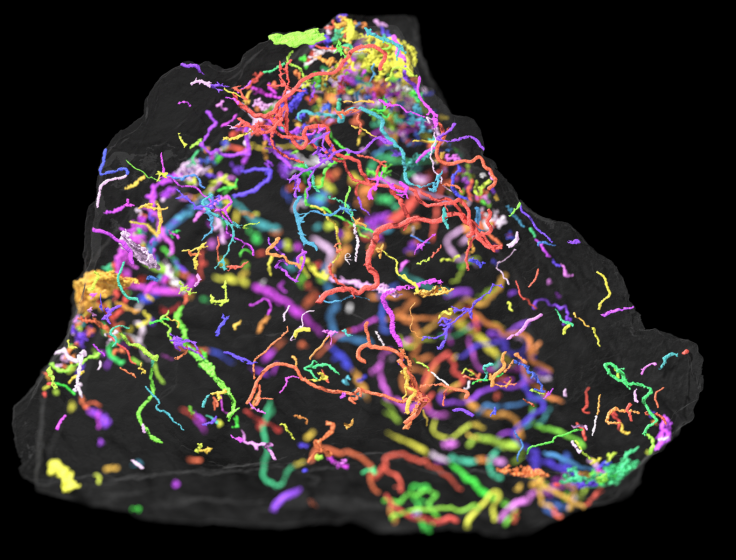Fossils From 500 Million Years Ago Show Evolution’s Step To Complex Animals

Scientists have found fossils left behind by life forms that slithered on Earth more than 500 million years ago, some of the first creatures that were able to move around.
They are trace fossils, which are the evidence of the movements of these organisms rather than remains of the organisms themselves. The University of Manchester explained that a group of paleontologists found the fossilized pathways of the prehistoric life in rock from Brazil, reporting that the animals burrowed tracks that were just a fraction of an inch in diameter — between 0.002 inches and 0.024 inches, to be exact.
“The creatures that made them were similar in size to a human hair,” according to the university.
Those organisms that dug through the sediment and left behind the burrows were probably comparable to the roundworms of today, also known as nematodes. They would have propelled themselves forward by making a wave-like motion with their bodies, known as undulating locomotion.
According to the university, the find is significant because the trace fossils, which are also known as ichnofossils, were carved out so long ago — they are older than the fossils we have already discovered of similar animals.
“These fossils are found in rock layers which actually pre-date the oldest fossils of complex animals,” researcher Russell Garwood said in the university statement.
The complex animals that the scientists are referring to include those with muscle control, which would enable them to propel themselves around. That’s compared to simple animals like sponges.
“Our new fossils show that complex animals with muscle control were around approximately 550 million years ago, and they may have been overlooked previously because they are so tiny,” lead study author Luke Parry, from the University of Bristol, said.
In the journal Nature Ecology & Evolution, the team of scientists explained that the trace fossils date back to a time period known as the Ediacaran–Cambrian transition, the meeting point when the former of these two geological periods ended and the latter began. During the transition, there was an explosion of life on Earth — lots of creatures emerged all at once. That includes the oldest examples of bilaterian animals, which have a body that can be divided into a left and a right side, a top and a bottom, and a front and a back.
Those bilaterians “are all animals that are more closely related to humans, rather than to simple creatures like jellyfish,” Parry said.
The newly discovered trace fossils date back earlier than the earliest known bilaterians, making them a new record-holder for these small kinds of creatures.
“Most fossils of bilaterian animals are younger, first appearing in the Cambrian period,” according to Parry.
The research team studied them by taking X-ray images to create a 3D model of the rock in which the fossils appear, enabling the group to take a closer look without doing damage to the original specimen.
In their study, the scientists referred to this type of fossil as an “unexplored window for tracking animal evolution in deep time.”
© Copyright IBTimes 2024. All rights reserved.





















